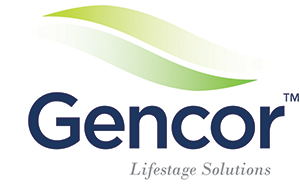This growth is most likely emerging from the increase in active end-users and the progressively ageing population. When compared with five years ago, 4.8 million more Americans are participating in high-calorie exercise activities at least three times a week. And although this doesn’t meet the recommended rate of daily activity, people are more active than ever before.1
Seniors have historically dominated the joint health marketplace; but, today, the younger, more active lifestylers and weekend warriors have started to take action. On the other side of this growing marketplace lies the less active people — gamers and those who work a desk job for eight or more hours a day.
These people are also interested in joint supplementation because of the aches and discomforts they may have from sedentary regimes. Overall, the joint health category is a US$2 billion market, which is the highest value that this sector has seen in a decade, according to Nutrition Business Journal data.2 With this growth, it is safe to say that the increase in active consumers has heavily influenced the marketplace.
People participating in sports, which include heavy loading or stress induced by repetitive bouts of movement, are a great demographic for joint and bone-related supplements. Activities that stimulate excessive sweating, such as running, weight lifting and rugby, may also require joint and bone-related supplementation because of the minerals depleted as a result of perspiration.
Moreover, seniors who exercise may have higher requirements for joint and bone health supplementation owing to the added stress on top of the physical changes that come naturally with age (loss of bone, strength, etc.).
The joint health market has been held by two major players, glucosamine, and a combination of glucosamine and chondroitin.3 However, there are now more ingredient options to address these concerns, including curcumin, collagen, cannabidiol (CBD), palmitoylethanolamide (PEA) and more.
Curcumin, a natural anti-inflammatory, is starting to shed light on the joint and bone health sector.
In 2018, curcumin was the most researched botanical ingredient of the year and was recently listed as an ergogenic supplement in an IOC Consensus statement.4
However, a huge barrier for this ingredient is its poor bioavailability. One technology — LipiSperse — has overcome this issue and allows the curcumin to easily disperse in water. By delivering up to 90% curcuminoids with only 10% excipients, this technology enables manufacturers to overcome the challenges found with standard curcumin.
Furthermore, a pharmacokinetic study on a branded curcumin developed with the LipiSperse technology, HydroCurc, demonstrated increased bioavailability by delivering 807 nm/mL of curcuminoids in blood after a single dose of 375 mg of HydroCurc.
Another unique functionality of HydroCurc is its ability to be used in various formats beyond standard capsules and tablets. It can now be incorporated into powders, effervescents, RTD shots and more, making it an attractive option for formulators.
Another innovative ingredient entering this space is PEA, which is an endogenous fatty acid that’s naturally produced by the body in response to stressors, inflammation and pain. PEA has been shown to have anti-inflammatory, antioxidant and analgesic properties, which are vital components in any joint care product.
Levagen, a branded extract of PEA, is a unique ingredient clinically shown to reduce the detriments caused by exercise. A recent study on osteoarthritis patients demonstrated Levagen to reduce joint aches and stiffness, which tends to be the result of mechanical stress induced by exercise.5
PEA is also a well-documented alternative to CBD. Although the global cannabis market is estimated to be worth approximately $57 billion by 2027, the complexity of regulations on CBD in both the US and Europe may not go away any time soon.
To be a part of this movement without the legal ramifications, companies have started looking for ingredients that influence similar endocannabinoid pathways. PEA has been shown to stimulate the production of endocannabinoids in the body’s endocannabinoid system (ECS).
PEA is also structurally related to anandamide (AEA), a compound associated with regulating pain, and may coenhance its soothing effects as well as inhibit fatty acid amide hydrolase (FAAH), which breaks AEA down. PEA is not only revolutionising the joint health category, it’s also proving to be beneficial within the recovery, relaxation and sleep categories.
Delivery format demands are also changing the state of the joint health market. Consumer interests have changed with time as a result of pill fatigue, difficulty swallowing, consumer compliance and/or efficacy. Innovative ingredients that can be applied in effervescents, RTD sachets and powders are starting to rise in popularity because of their convenience.
Athletes are also straying away from capsules and tablets because of their similarity, in terms of format, to banned substances, making other delivery systems more appealing. With new technologies and administration routes, such as LipiSperse, it’s becoming more convenient for manufacturers to create better functional and bioavailable products.
References
- www.physicalactivitycouncil.com/pdfs/current.pdf.
- www.nutritionbusinessjournal.com/reports/2018-nbj-condition-specific.
- www.naturalproductsinsider.com/bone-joint/joint-health-young-and-old-digital-magazine.
- https://bjsm.bmj.com/content/52/7/439.
- https://link.springer.com/article/10.1007/s10787-019-00582-9.

